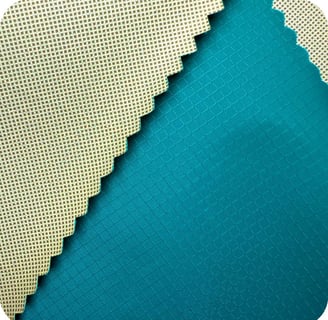The Evolution and Future Trends of Fabric Finishing Processes
#Fabric finishing is a key step in enhancing the performance and appearance of fabrics. With technological advancements, #finishing processes have evolved from simple physical treatments to complex systems integrating high-tech materials, sustainable processes, and intelligent technologies. This blog explores the evolution of fabric finishing, current innovations, and future trends, offering insights into its significance in the textile industry.
CC Textile-FTY WhatsApp:+86 153 0626 7080
10/8/20241 min read


Fabric finishing refers to various physical, chemical, or mechanical treatments applied to fabrics to enhance their feel, appearance, or functionality. Common finishing processes include #waterproofing, #anti-wrinkle treatments, #coating, #antibacterial treatments, and #flame-retardant finishing. These processes not only improve the aesthetics of fabrics but also enhance their durability and functionality, catering to different fields such as #outdoor apparel, #home textiles, and #functional fabrics.
Traditional fabric finishing primarily relied on physical or chemical methods. #Mechanical finishing processes, such as #calendering, #brushing, and #glazing, were commonly used to enhance the luster and feel of fabrics. #Chemical finishing methods altered fabric properties by applying coatings or soaking fabrics in chemicals such as #softeners or #antistatic agents. While these methods improved fabric performance, some processes had negative environmental impacts.
With increased environmental awareness and technological advancements, fabric finishing is evolving towards #green technologies and #high-efficiency processes. For example, #nanotechnology has made significant progress in providing #waterproofing and #stain-resistant properties, while the demand for #antibacterial and #antiviral effects has driven the development of functional textiles. Additionally, #plasma technology and #UV curing have been widely adopted for #chemical-free surface treatments, enhancing fabric performance while reducing environmental impact.
The future of fabric finishing will see breakthroughs in #smart textiles and #sustainability. #Smart finishing technologies will integrate sensors and electronic components, enabling fabrics with #self-cleaning, #temperature regulation, and #health monitoring functions. At the same time, #sustainable finishing processes will reduce environmental impact through the use of #bio-based materials, #recycled materials, and #water-based finishing agents. Moreover, the introduction of #digital technology will make #customization and #small-batch production more efficient and flexible.
As an essential step in textile production, fabric finishing is undergoing a profound transformation. The use of #eco-friendly materials and the incorporation of #smart technologies offer tremendous potential for future fabrics in terms of functionality and sustainability. As technology continues to advance, #finishing processes will keep driving the textile industry towards a more sustainable, efficient, and intelligent future.
Get in touch
Address
Suzhou CC Textile Co.,LTD
4101 West Ring 2nd Road, Shengze Town, Wujiang District, Suzhou, Jiangsu Province, China
ZIP Code:215228
